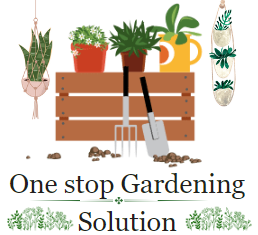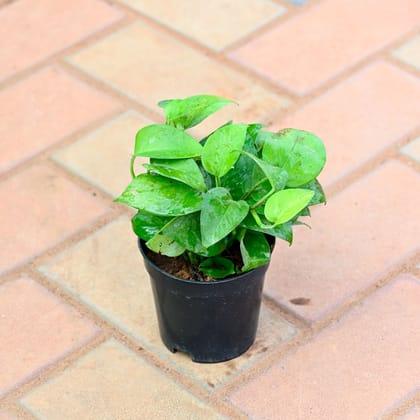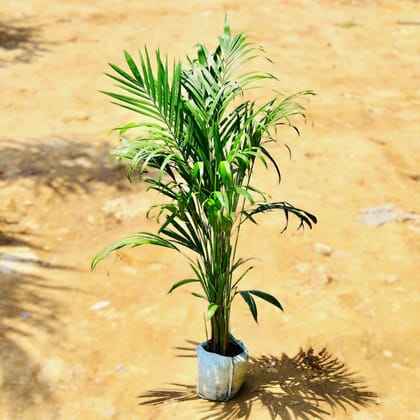
- Plants
- Plants
- Pots
- Pots
- Soil & More
- Soil & More
- Home Decor Plants
- Home Decor Plants
- Seeds
- Seeds
- Tools
- Tools
- Gifting
- Gifting
- Bulk Gifting
- Bulk Gifting
- Others
- Others
- Sale
- Sale
- Best Sellers
- Best Sellers
Urvann
Urvann is your one-stop online nursery for plants, planters, gardening accessories, and tools. Order fresh plants and get free home delivery on the next day!
EN66d324a9692a74002ba3b31b Raat Ki Rani / Night Blooming Jasmine in 6 Inch Nursery Bag https://www.urvann.com/s/6176774ef575bbd2b3331c8a/66d324ab692a74002ba3b31d/1percent20-14-.jpg
The Jasmine plant is a genus of shrubs in the family of Oleaceae. It is also commonly known in Indian households as the ‘mogra’ plant and produces extremely fragrant flowers. This is an evergreen plant and provides year-long flowering. The flowers are white in color and are used for decorating landscapes and gardens. It has dark green foliage and is commonly found in tropical and subtropical regions of the world. The mogra flower is also used as an offering in temples.
Benefits of Jasmine Plant
 Tough Plant
Tough Plant
The Jasmine flowering plant looks delicate but is a hardy plant, and is very easy to grow and care of. It is perfect for newbie gardeners.
 Good for Pollination:
Good for Pollination:
The blooms of the Jasmine plant attract many pollinating insects such as butterflies, bees, and more. Pollination is essential to promote biodiversity.
 Low Maintenance:
Low Maintenance:
The Jasmine flowers are very easy to care for and thrive well in tropical and subtropical countries such as India. However, the plant requires thorough watering and occasional pruning sometimes to help in its healthy growth.
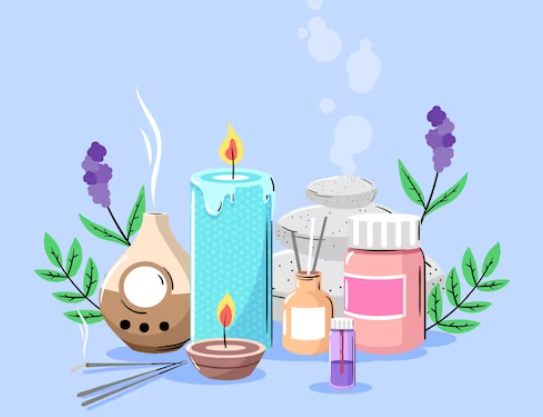 Commercial use
Commercial use
The Jasmine plant is used to make fragrances, oils, and garlands owing to its sweet fragrance flowers.
Care Tips for Jasmine Plant
 Watering :
Watering :
The soil for the Jasmine plant must be kept moist, especially during the growing season. Water plants consistently, but avoid water-logging.
 Light :
Light :
The Jasmine plant loves bright sunlight for at least 5-6 hours a day.
 Placement :
Placement :
Jasmine is an outdoor plant. It should be kept in an area receiving bright sunlight.
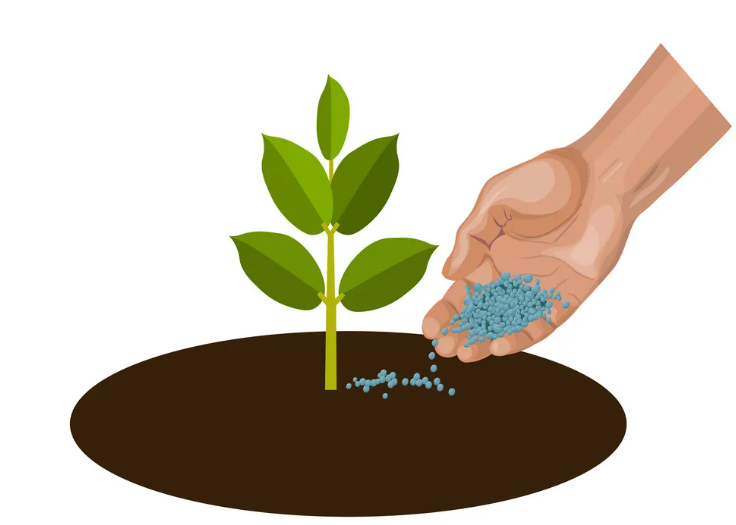 Fertilization :
Fertilization :
To Fertilize - Add nitrogen and phosphorus to the Jasmine Plant to maintain good plant growth. You can also add dry banana peels as they are a rich source of nitrogen. You can also use Vermicompost every 2 weeks.
Using seaweed fertilizer also balances the nutrition of the plant.
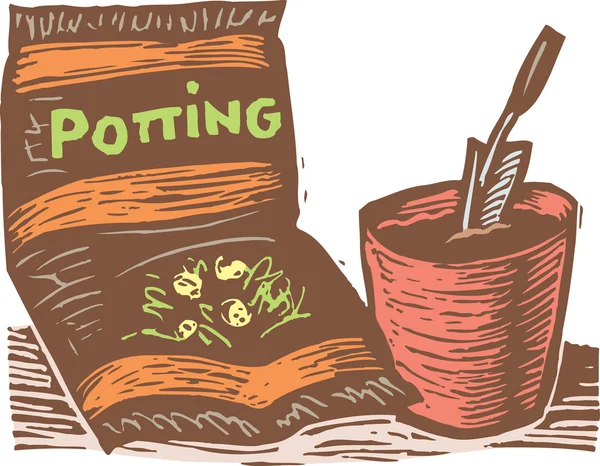 Ideal Soil Mix :
Ideal Soil Mix :
Jasmine plants prefer acidic soil. Use cow dung as part of your soil mix as it will make the soil acidic. The ideal soil mix for this plant should be, Garden Soil (35%) + Cocopeat (30%) + Vermicompost (30%) + Neem Khali (5%).
 Pruning :
Pruning :
Keep pruning the Jasmine plant to encourage branch growth and give it more spread.
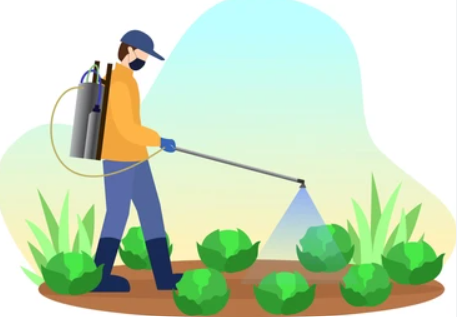 Pest Control :
Pest Control :
Mealybugs and whiteflies are a big problem for the Jasmine plant. Keep spraying the plant with neem spray every 2 weeks to help with pest control.
Frequently Asked Questions about Jasmine Plant
1. When does the Jasmine plant bloom?
The Jasmine plant blooms all around the year. It is an evergreen plant.
2. How do I protect my jasmine plant in the winter?
Keep the plants away from shady areas and place them where they are not directly exposed to the chill, and also receive sunlight during the day.
3. Is Jasmine and Mogra the same?
Yes, they are the same plants.
4. Are Jasmine Flowers scared?
The Jasmine flower is used as an offering to Lord Shiva by devotees.
5. Where can I buy the Jasmine plant?
Head over to Urvann, India’s favorite online nursery, and browse from their extensive collection of plants.
.
STN0763Nin stockINR 79
8 5
Email ID already exists!
Your Current password is incorrect
Password Updated Successfully
Thanks for your Feedback
- Home
- Pooja Flowering Plants
- Summer Plants
- Raat Ki Rani / Night Blooming Jasmine in 6 Inch Nursery Bag
Raat Ki Rani / Night Blooming Jasmine in 6 Inch Nursery Bag
₹79₹209 (62%OFF)
Sold By: STN
Features
- Highly fragrant blooms
- Bright, green leaves
- Perennial plant
- Low-maintenance
Description of product
The Jasmine plant is a genus of shrubs in the family of Oleaceae. It is also commonly known in Indian households as the ‘mogra’ plant and produces extremely fragrant flowers. This is an evergreen plant and provides year-long flowering. The flowers are white in color and are used for decorating landscapes and gardens. It has dark green foliage and is commonly found in tropical and subtropical regions of the world. The mogra flower is also used as an offering in temples.
Benefits of Jasmine Plant
 Tough Plant
Tough Plant
The Jasmine flowering plant looks delicate but is a hardy plant, and is very easy to grow and care of. It is perfect for newbie gardeners.
 Good for Pollination:
Good for Pollination:
The blooms of the Jasmine plant attract many pollinating insects such as butterflies, bees, and more. Pollination is essential to promote biodiversity.
 Low Maintenance:
Low Maintenance:
The Jasmine flowers are very easy to care for and thrive well in tropical and subtropical countries such as India. However, the plant requires thorough watering and occasional pruning sometimes to help in its healthy growth.
 Commercial use
Commercial use
The Jasmine plant is used to make fragrances, oils, and garlands owing to its sweet fragrance flowers.
Care Tips for Jasmine Plant
 Watering :
Watering :
The soil for the Jasmine plant must be kept moist, especially during the growing season. Water plants consistently, but avoid water-logging.
 Light :
Light :
The Jasmine plant loves bright sunlight for at least 5-6 hours a day.
 Placement :
Placement :
Jasmine is an outdoor plant. It should be kept in an area receiving bright sunlight.
 Fertilization :
Fertilization :
To Fertilize - Add nitrogen and phosphorus to the Jasmine Plant to maintain good plant growth. You can also add dry banana peels as they are a rich source of nitrogen. You can also use Vermicompost every 2 weeks.
Using seaweed fertilizer also balances the nutrition of the plant.
 Ideal Soil Mix :
Ideal Soil Mix :
Jasmine plants prefer acidic soil. Use cow dung as part of your soil mix as it will make the soil acidic. The ideal soil mix for this plant should be, Garden Soil (35%) + Cocopeat (30%) + Vermicompost (30%) + Neem Khali (5%).
 Pruning :
Pruning :
Keep pruning the Jasmine plant to encourage branch growth and give it more spread.
 Pest Control :
Pest Control :
Mealybugs and whiteflies are a big problem for the Jasmine plant. Keep spraying the plant with neem spray every 2 weeks to help with pest control.
Frequently Asked Questions about Jasmine Plant
1. When does the Jasmine plant bloom?
The Jasmine plant blooms all around the year. It is an evergreen plant.
2. How do I protect my jasmine plant in the winter?
Keep the plants away from shady areas and place them where they are not directly exposed to the chill, and also receive sunlight during the day.
3. Is Jasmine and Mogra the same?
Yes, they are the same plants.
4. Are Jasmine Flowers scared?
The Jasmine flower is used as an offering to Lord Shiva by devotees.
5. Where can I buy the Jasmine plant?
Head over to Urvann, India’s favorite online nursery, and browse from their extensive collection of plants.
.
Related products
User reviews
8 Reviews
I loved all the products.Jan 27, 2025 7:39:52 AM
I loved all the products.Jan 22, 2025 6:01:31 AM
I loved all the products.Jan 7, 2025 10:20:19 AM
I loved all the products.Jan 7, 2025 10:03:33 AM
I loved all the products.Dec 24, 2024 9:01:31 AM
I loved all the products.Dec 10, 2024 9:56:16 AM
I loved all the products.Nov 6, 2024 7:43:52 AM
I ordered from Urvann and got my products in very good condition in one day.Sep 3, 2024 7:16:41 AM
Urvann is your one-stop online nursery for plants, planters, gardening accessories, and tools. Order fresh plants and get free home delivery on the next day!
Information
Major Categories
Gifting
Offers under 99
Offers Under 199
Plants
- Indoor Plants
- Low Maintenance Plants
- Flowering Plants
- Outdoor Foliage Plants
- Religious & Sacred Plants
- Air Purifying Plants
- Cactus & Succulents
- Good Luck Plants
- Plants by Location
- Plants of the Month
- Herbs-Medicinal & Vegetable Plants
- Fruit Plants
- Monsoon Plants
- Hanging Plants
- Potted Plants
- Bonsai Plants
- Special Plant Combos
- Bamboo Plant
- Pet Friendly Plants
- Plants to grow in Water
- Mosquito Repellent Plants
- Climbers & Creepers
Gardening Tools & Equipments
Soil & Fertilizers
Membership & Gift Cards
ADDRESS
Urvann India Private Limited
E-176
Delhi
Delhi 110060
IN
NEWSLETTER
Subscribe to get Email Updates!
Thanks for subscribe.
Your response has been recorded.
India's Number 1 Choice for Plants | Urvann India Private Limited


